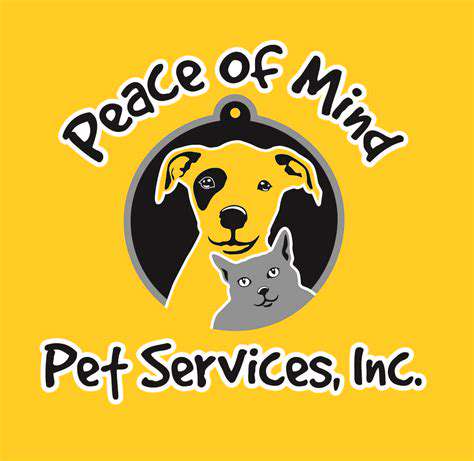How to Support Breed Specific Rescues
When it comes to animal welfare, breed-specific rescues fill a niche that general shelters often can't. These organizations pour their hearts into understanding and meeting the distinct needs of particular breeds. Their specialized care makes all the difference for dogs and cats with unique health or behavioral challenges. Imagine a retired racing greyhound needing help adjusting to home life or a bulldog requiring breathing assistance—these rescues provide exactly what's needed.
Addressing Specific Needs of Breeds
Every breed comes with its own genetic blueprint, and that often includes predisposition to certain conditions. What sets breed rescues apart is their eagle-eyed ability to spot early warning signs of breed-specific ailments. They'll notice the subtle limp in a German Shepherd that hints at hip dysplasia or recognize the skin sensitivities common in Shar-Peis. This expertise means animals get treatment before problems escalate.
Enhancing Adoption Rates and Finding Homes
Matching pets with people isn't just about finding any home—it's about finding the right home. Breed specialists understand that a high-energy Border Collie needs space to run, while a laid-back Basset Hound prefers cozy naps. This insight leads to more successful, lasting adoptions where both pet and owner thrive together. They'll ask the right questions to ensure lifestyles align perfectly.
Protecting Vulnerable Breeds from Overpopulation
Shelters overflow with certain breeds at different times—maybe it's an influx of Huskies after a popular TV show or Chihuahuas from an irresponsible breeder. Breed rescues act as lifeboats, pulling these animals from overcrowded shelters where they might face euthanasia. Their work preserves genetic diversity by ensuring these dogs continue to have loving homes rather than disappearing from our communities.
Promoting Responsible Breeding Practices
These organizations don't just clean up messes—they help prevent them. By educating about the importance of health testing and temperament evaluation, they raise the bar for breeders everywhere. When people see the heartbreaking results of poor breeding—the dogs with breathing difficulties or unstable temperaments—it drives home why responsible practices matter so deeply.
Educating the Public About Breed-Specific Traits
Too many pets end up returned because owners didn't understand what they were signing up for. Breed rescues change this by giving potential adopters crystal-clear expectations about everything from exercise needs to grooming requirements. They'll explain that a Beagle will follow its nose anywhere or that a Poodle needs regular haircuts. This knowledge prevents heartbreaking returns and creates happier households.
Building a Strong Support Network for Breeds
These rescues create entire ecosystems around specific breeds. New adopters can connect with experienced owners for advice, find breed-savvy veterinarians, and even join playgroups with similar dogs. This web of support means no one has to figure things out alone, creating better outcomes for every animal involved. It's this community spirit that truly transforms lives—both canine and human.

Volunteering Your Time and Skills

Giving Back to Your Community
Donating your time creates ripples of positive change throughout your neighborhood. Whether you're serving meals at a soup kitchen or reading to shelter animals, these acts weave stronger social fabric. There's profound satisfaction in knowing your efforts directly improved someone's day—or even their life trajectory. The connections formed while volunteering often become unexpected friendships that enrich both parties.
Hands-on service teaches lessons no classroom can replicate. You might discover hidden talents—perhaps a gift for calming nervous animals or organizing chaotic donation drives. These experiences reshape how we view our communities, revealing both challenges and extraordinary resilience. Volunteers frequently report gaining far more than they give, finding new perspectives that color all aspects of their lives.
Developing New Skills and Experiences
That Saturday spent building wheelchair ramps might uncover a passion for carpentry. Coordinating adoption events could reveal a talent for public speaking. Volunteering serves as a low-pressure laboratory for personal growth where every interaction teaches something valuable. Many discover career paths they'd never considered through these experiences—the graphic designer who starts creating materials for nonprofits or the accountant who begins advising small charities.
The professional benefits often surprise people. Leadership opportunities abound in volunteer settings, letting you test management skills in real-world scenarios. These experiences become compelling stories during job interviews, demonstrating initiative and values beyond the resume. Networking happens organically too—the fellow volunteer today might be the connection to your dream job tomorrow.
Perhaps most importantly, service work fosters creativity. Facing limited resources breeds innovative solutions—skills that transfer brilliantly to any workplace. Whether improvising enrichment activities for shelter dogs or devising new fundraising strategies, volunteers constantly exercise problem-solving muscles that benefit every area of life.









![Review: [Specific Brand] Smart Pet Door](/static/images/33/2025-05/EaseofInstallationandSetup.jpg)
